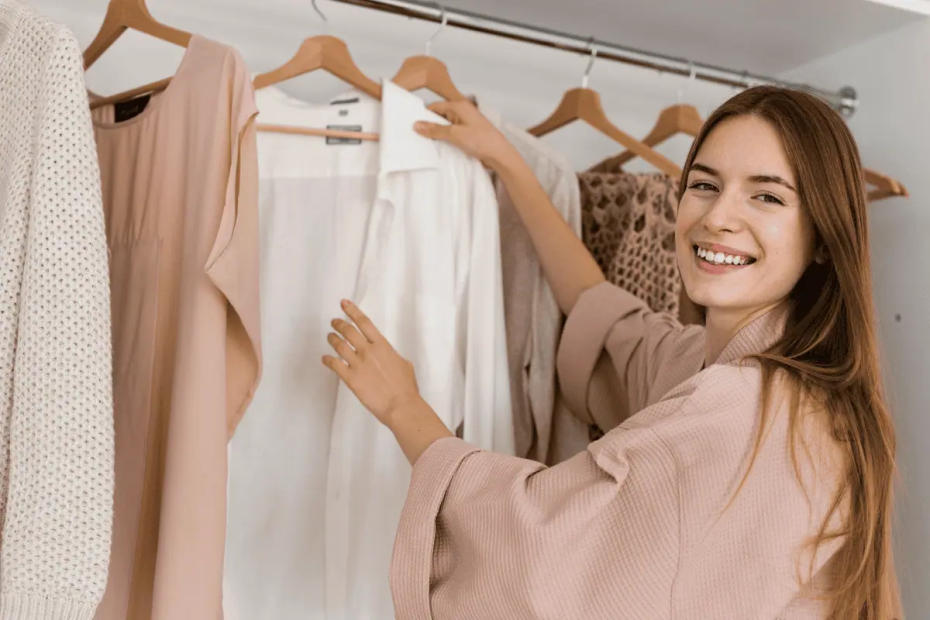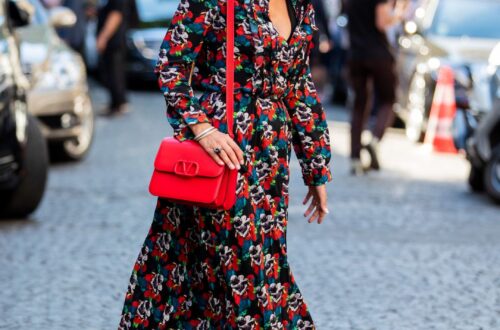Personal style is more than just clothes—it’s your unique way of presenting yourself to the world. It’s the vibe you give off when you walk into a room, the silent story your outfit tells about who you are. Finding your personal style can feel like chasing a mirage, especially with trends flashing by on social media, but it’s a journey worth taking. This article will guide you through defining personal style, uncovering your own, and building a wardrobe that feels authentically you, all while weaving in practical steps and a touch of humor to keep it real.
Why Personal Style Matters
Your personal style is your visual handshake. It’s how you communicate confidence, personality, and values without saying a word. Whether you’re strutting into a boardroom or grabbing coffee with friends, your style sets the tone. It’s not about being the loudest in the room—it’s about feeling like the best version of yourself.
The Confidence Boost
When you wear something that feels “you,” it’s like putting on armor. Studies, like one from Social Psychological and Personality Science, show that what you wear can boost cognitive processing and self-esteem. Ever notice how a killer outfit makes you stand taller? That’s your personal style working its magic.
A Tool for Self-Expression
Your style is a canvas for your personality. Love vintage vibes? Your thrifted blazer might hint at a love for nostalgia. Obsessed with bold colors? That screams confidence. Your wardrobe choices reflect your interests, values, and even your mood, making style a powerful form of non-verbal communication.
What Personal Style Is Not
Before we dive into finding your style, let’s clear up some misconceptions. Personal style isn’t about chasing trends, splurging on designer labels, or copying your favorite influencer’s look. It’s not a one-size-fits-all formula, and it’s definitely not about having a massive closet.
Not About Trends
Trends come and go faster than you can say “low-rise jeans.” Personal style is about what resonates with you, not what’s plastered across fashion blogs. You don’t need to wear the latest TikTok-approved skirt to look stylish.
Not About Labels
You don’t need a Gucci bag or Prada shoes to have style. A $20 thrift store find can speak volumes if it aligns with your vibe. Personal style is about how you wear something, not how much it costs.
How to Discover Your Personal Style
Finding your personal style is like solving a puzzle where you’re both the pieces and the picture. It’s already inside you—you just need to uncover it. Here’s a step-by-step guide to help you define and embrace your unique look.
Step 1: Reflect on What You Love
Start by looking inward. What outfits make you feel unstoppable? Think about the times you’ve walked out the door feeling like a million bucks. Maybe it was that flowy dress you wore to brunch or those sneakers that gave you an extra spring in your step.
- Journal Prompt: Write down three outfits you’ve loved wearing. What made them special? Was it the color, fit, or vibe?
- Closet Audit: Pull out five pieces you wear all the time. Notice patterns—do you lean toward neutrals, bold prints, or cozy fabrics?
This reflection helps you identify what already works for you, setting the foundation for your style journey.
Step 2: Find Your Style Icons
Your style icons don’t have to be celebrities—they could be a friend, a character from a movie, or even a stranger on the street whose vibe you loved. These are people whose looks inspire you to experiment.
- Pinterest Power: Create a board and pin outfits that catch your eye. Over time, you’ll see patterns emerge, like a love for tailored blazers or bohemian dresses.
- Real-Life Inspiration: Notice what people around you are wearing. That coworker with the perfect scarf collection? She might spark an idea.
For example, I once saw a woman at a coffee shop rocking a leather jacket with a floral skirt. The combo was unexpected but so her. It inspired me to mix textures in my own wardrobe, like pairing a denim jacket with a silk top.
Step 3: Define Your Style with Three Words
Wardrobe stylist Allison Bornstein’s “three-word method” is a game-changer for pinning down your style. Pick three adjectives that describe your ideal aesthetic. For instance, mine are “eclectic,” “vibrant,” and “comfortable.” These words act as a filter for every clothing decision.
- Example: If your words are “classic,” “minimal,” and “elegant,” you might gravitate toward tailored trousers and neutral tones.
- Try It: Look at your favorite outfits or Pinterest pins. What words come to mind? Write them down and keep them handy when shopping.
This method keeps you focused and helps you avoid impulse buys that don’t fit your vibe.
Step 4: Experiment with Your Closet
Your closet is a treasure trove of possibilities. Before you buy anything new, play with what you already own. Try unexpected combinations, like pairing a graphic tee with a blazer or layering a dress over jeans.
- Mix and Match: Take one item you love and style it three different ways.
- Iterate: If you hate a piece, tweak it. Maybe that stiff shirt needs a belt to feel more “you.”
I once hated a pair of high-waisted trousers because they felt too formal. Adding a chunky sweater and sneakers transformed them into a go-to outfit. Experimentation is key to uncovering what works.
Step 5: Identify Your Signature Piece
A signature piece is something that ties your style together, like a favorite accessory or a go-to clothing item. Think Jackie O’s oversized sunglasses or Harry Styles’ pearl necklaces. It’s not about being flashy—it’s about consistency.
- Find Yours: Notice what you reach for repeatedly. For me, it’s bold earrings—they add personality to even my simplest outfits.
- Make It Unique: Your signature doesn’t have to be loud. A subtle scarf or a specific color palette can define your look.
Your signature piece becomes your style anchor, making your outfits instantly recognizable as “you.”
Step 6: Consider Sustainability
Personal style isn’t just about aesthetics—it’s about aligning with your values. Sustainable fashion, like thrifting or investing in quality pieces, can make your wardrobe feel more meaningful.
- Shop Secondhand: Platforms like Poshmark or local thrift stores are goldmines for unique finds.
- Invest in Quality: A well-made coat might cost more upfront but lasts years, saving money and reducing waste.
Choosing sustainable options not only feels good but also adds depth to your style story.
Tools and Resources to Find Your Style
Building your personal style doesn’t require a stylist or a big budget. Here are some practical tools and resources to guide you.
| Tool/Resource | What It Offers | Where to Find It |
|---|---|---|
| Visual inspiration for outfits and aesthetics | Pinterest.com | |
| ThredUp | Affordable secondhand clothing | ThredUp.com |
| Style Quiz | Identifies your dominant fashion category | Gabrielle Arruda’s Free Quiz |
| Wardrobe Apps | Organize and plan outfits | Cladwell, Pureple |
Pros and Cons of Style Tools
Pros:
- Inspiration: Platforms like Pinterest spark creativity.
- Accessibility: Free or low-cost options make style exploration easy.
- Organization: Apps help you see what you already own.
Cons:
- Overwhelm: Too many options can lead to decision fatigue.
- Time-Intensive: Building mood boards or taking quizzes requires effort.
- Temptation to Overspend: Online shopping links can lead to impulse buys.
Comparing Style Approaches
| Approach | Best For | Challenges |
|---|---|---|
| Three-Word Method | Defining a clear aesthetic | Can feel limiting if your style evolves |
| Closet Audit | Working with what you own | May require decluttering, which can be emotional |
| Style Icons | Visual inspiration | Risk of copying rather than adapting |
Each approach has its strengths, but combining them often yields the best results. Start with a closet audit, define your three words, and then seek inspiration to refine your look.
People Also Ask (PAA)
How do I know what my personal style is?
Your personal style is reflected in the clothes you feel most confident wearing. Start by noticing what you gravitate toward in your closet and what outfits make you feel like yourself. Tools like style quizzes or mood boards can help clarify your preferences.
How can I develop my own style?
Developing your style involves self-reflection, experimentation, and curation. Try journaling about your favorite outfits, playing with combinations in your closet, and using the three-word method to define your aesthetic. Don’t be afraid to try new looks!
Why is personal style important?
Personal style boosts confidence, communicates your identity, and helps you stand out. It’s a way to express who you are without words, making it a powerful tool for self-expression and connection with others.
How do I find my style on a budget?
Thrift stores, secondhand platforms like ThredUp, and capsule wardrobes are great for building style affordably. Focus on versatile, high-quality pieces that align with your three words, and avoid trendy items that won’t last.
FAQ Section
Q: How long does it take to find my personal style?
A: Finding your style is a journey, not a race. It can take weeks to months as you experiment and refine your preferences. Be patient and enjoy the process—each outfit is a chance to learn more about yourself.
Q: Can my personal style change over time?
A: Absolutely! Your style evolves with your experiences, lifestyle, and tastes. What felt “you” at 20 might not fit at 30. Embrace the change and update your wardrobe as needed.
Q: How do I avoid copying someone else’s style?
A: Use inspiration as a starting point, not a blueprint. Adapt elements to fit your personality, body type, and lifestyle. For example, if you love a celebrity’s bold prints, try them in colors that suit you.
Q: What if I don’t have a big budget for clothes?
A: You don’t need a big budget to have style. Shop secondhand, focus on versatile staples, and get creative with what you already own. Accessories like scarves or jewelry can transform basic outfits.
Q: How do I know if a piece fits my style?
A: Ask yourself: Does it align with my three words? Do I feel confident wearing it? Will I wear it often? If the answer is yes, it’s likely a good fit for your personal style.
Final Thoughts
Finding your personal style is like discovering your favorite song—it’s always been there, waiting for you to turn up the volume. By reflecting on what you love, experimenting with your closet, and defining your aesthetic with tools like the three-word method, you can build a wardrobe that feels like home. Don’t stress about getting it perfect—style is fluid, and the journey is half the fun. So, grab that bold scarf or those trusty sneakers, and start telling your story through your clothes. What’s one outfit you’re excited to try this week? Share in the comments—I’d love to hear!





